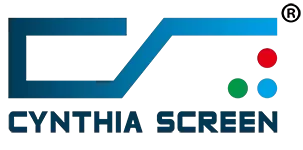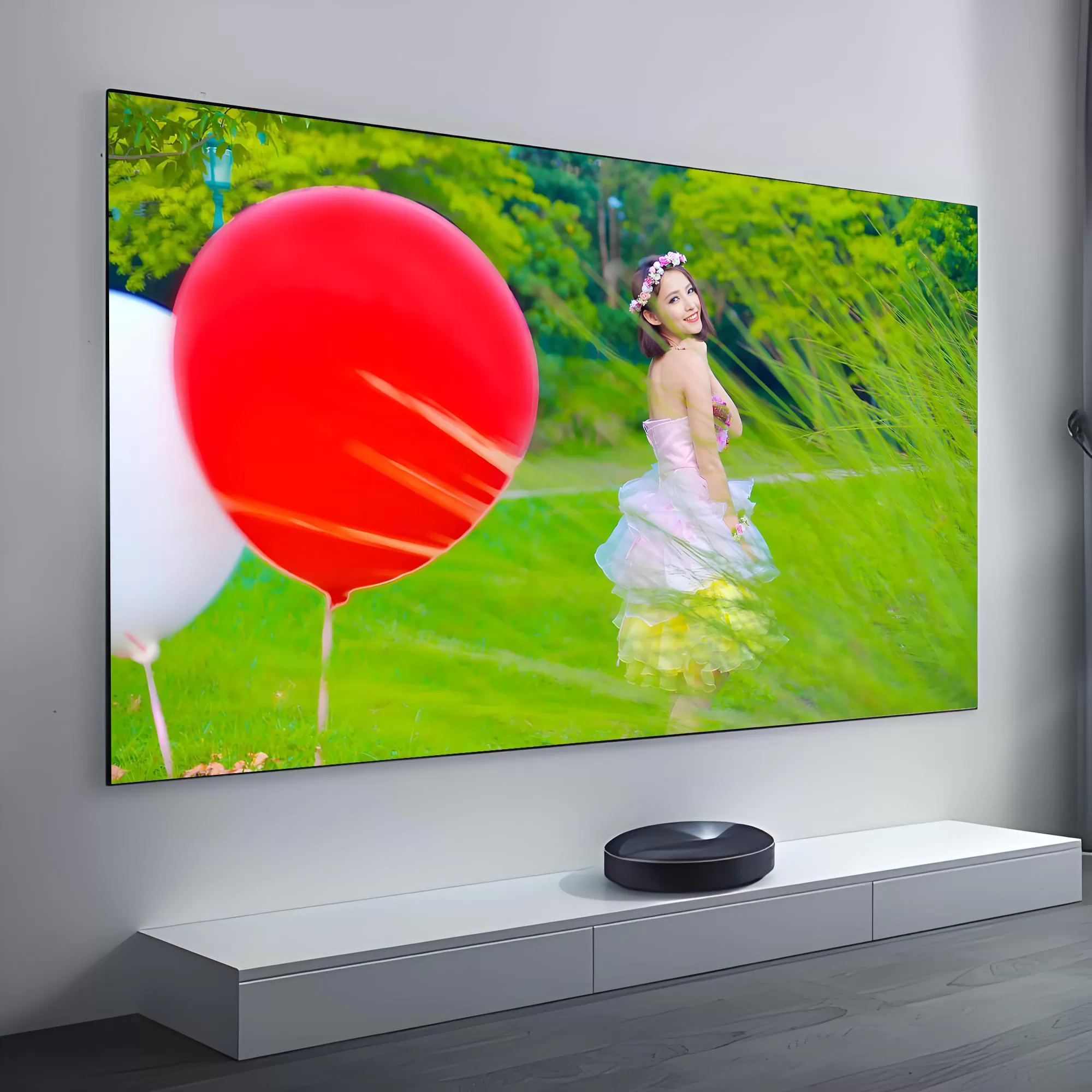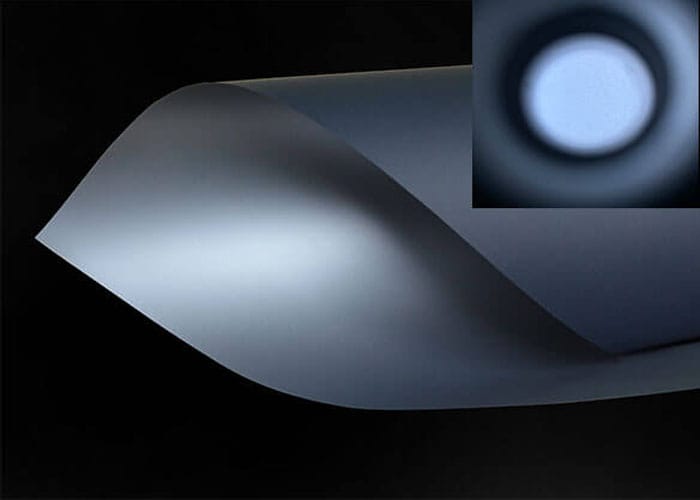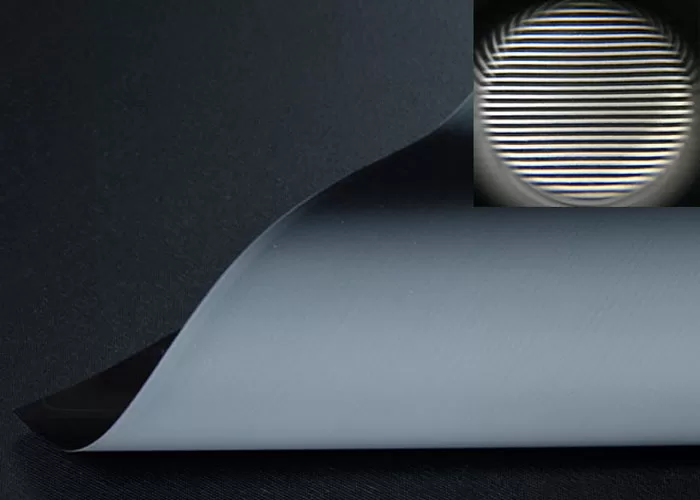What Type of Screens Are Suitable for Ultra-Short-Throw Projectors? -UST projector screen
Ultra-short-throw projectors require screens with high light resistance, gain performance, and flatness due to their short projection distance and steep light incidence angles. Below are the types of screens suitable for ultra-short-throw projectors, along with their characteristics, analyzed through technical principles and usage scenarios:
1. Anti-Ambient Light Screens
Anti-light screens are the top choice for ultra-short-throw projectors, effectively absorbing ambient light while reflecting projected light to enhance brightness and contrast. Two main types exist:
- Black Grating Anti-Light Screen
- Features: A horizontal prism structure on the surface, with a sawtooth-shaped black light-absorbing layer to block ambient light from above and a white reflective layer to boost projected light. High ambient light resistance.
- Use Case: Ideal for environments with complex lighting (e.g., living rooms), but weaker resistance to side ambient light.
- Fresnel Hard Screen
- Features: Concentric circular grooves absorb ambient light from above and sides, achieving up to 2.6x gain (e.g., Nut S1 Ultra Fresnel Screen), significantly improving brightness and color accuracy.
- Use Case: Bright environments (e.g., daylight), best paired with high-brightness projectors (e.g., laser TVs). Limited viewing angle (±30°).
2. High-Contrast Screens
- Gray Matte/Gray Screen
- Features: Absorbs ambient light to improve black levels and contrast, ideal for dark environments.
- Anti-Light Gray Screen
- Features: Combines gray screen contrast with anti-light coatings for clarity in bright settings.
3. Screen Structures & Installation
- Fixed-Frame Screen
- Features: Rigid frame ensures perfect flatness, no warping, ideal for stability-focused setups.
- Tensioned Electric Screen
- Features: Maintains flatness via tensioning systems, suitable for hidden installations.
- Magnetic Fresnel Screen
- Features: Thin, wall-mounted designs (e.g., Nut Fresnel Screen) save space without drilling.
4. Other Materials
- White Matte/Fiberglass Screen
- Features: Budget-friendly, wide viewing angles, natural colors, best for controlled lighting.
- Flexible White/Gray Screen
- Features: PVC material with diffuse reflection, affordable for home theaters.
Selection Tips
- Ambient Light:
- Bright rooms: Fresnel or black grating screens.
- Dark rooms: Gray or high-contrast screens.
- Projector Brightness:
- Low-brightness projectors (<1500 ANSI lumens) need high-gain screens.
- Installation:
- Fresnel screens require fixed wall space; frame screens need layout planning.
- Viewing Angle:
- Avoid narrow-angle screens (e.g., beaded screens) for group viewing.
Conclusion
UST projector screen prioritize ambient light resistance, gain, and flatness. Fresnel hard screens and black grating screens excel in bright environments, while gray screens and fixed-frame screens optimize contrast and stability. Choose based on lighting, budget, and installation needs for the best experience.







